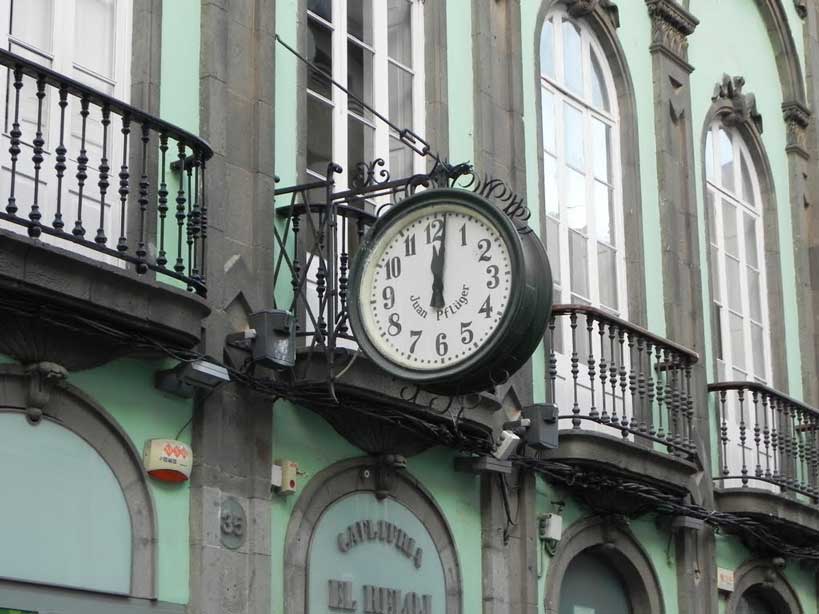How did the long standstill of Triana’s clock begin?
The first and longest inactivity of this clock started in 1965 and lasted until 1990. Then Armando Bordes Martín, with the permission of owner Gertrudes Pflüger, took the initiative to put the clock back into operation. He approached Jacobo González Velázquez, a resident of Santa Brígida and a renowned “handyman” who had previously repaired a clock in Heredad de Aguas. González volunteered his help to restore the clock.

That year the clock was dismantled and underwent intensive repairs for twelve months. On June 27, 1991, the clock was reinstalled in Triana and began marking time again in a festive ceremony. Luis García de Vegueta, Armando Bordes Martín and the owner expressed their gratitude to Jacobo González, who had repaired the clock when it was actually “Ripe for Scrap“.
Why did Triana’s clock stop again?
The second, and it seems, final standstill happened about ten to twelve years ago. After the closure of the watch shop, apparently no good agreements were made with the owners of the building. This led to Pflüger’s heirs deciding to disconnect the clock and take the grandfather clock, which was essential for its functioning, with them. The clock stopped at twelve hours and two minutes on a day no one remembers.
As with the steamboat “La Palma“, which was offered to the municipality at the time but was ignored and eventually moved to Tenerife, Pflüger’s heirs offered the clock to the city. They proposed donating the clock, on the condition that the municipality would take responsibility for its maintenance. However, there was no response.
According to Jacobo González, it is impossible for the clock to work again with the original, outdated mechanism it started with in the early 20th century. He believes that if an institution such as the Cabildo, the municipality or the Chamber of Commerce decides to restore the clock, the costs would be minimal given its ancient value and cultural importance.
How much does the restoration of Triana’s clock cost?
A few years ago, González inquired with specialized companies and sent a simple mechanical model to Pepe Macías. The estimated cost of installing this mechanism in the clock was less than a thousand euros at the time. However, Triana’s bell, an authentic relic (see illustration from 1928 when it hung in its current location), is at risk of demolition if action is not taken quickly.
Why is it important to preserve Triana’s clock?
The Triana Clock represents an important piece of cultural heritage in Las Palmas de Gran Canaria. Restoring and preserving the clock is not only a tribute to the city’s history, but also a valuable addition to the tourist and cultural landscape.
Let’s hope that some authority decides to save this historic clock and allow it to keep its rightful place in Triana.
Share Your Experiences and Suggestions about Triana’s Clock!
If you have more info or images of the Bell of Triana, we would love to hear about your adventures and recommendations! Your insights help us keep our tourism page up-to-date and improve it. Whether you have discovered a hidden gem, found a fantastic restaurant or have tips for other travellers, your feedback is invaluable. Share your experiences and suggestions with us verschueren.eddy@gmail.com and help others make the most of their visit to this beautiful island. Together we will create the ultimate guide to Gran Canaria!